本文由 Hanazaki Landscape 授权mooool发表,欢迎转发,禁止以mooool编辑版本转载。
Thanks Hanazaki Landscape for authorizing the publication of the project on mooool, Project photos provided by Hanazaki Landscape.
Hanazaki:这个花园受到了15000名来自巴西炎热地区的大学生的欢迎。花园的设计挑战在于如何创造一个对社区、学生和教师产生积极影响的户外区域。这所大学为低收入家庭的学生提供低教育费用的同时,还希望改善社区环境,给学生提供一个高审美质量的空间。
Hanazaki:This garden welcomes 15,000 students in a university located and hot region of Brazil. The challenge was to create an outdoor area to have a positive influence upon the community, students and faculty. The university offers affordable education to low income students and wanted to provide a space with high aesthetic quality and improve the neighborhood.
▼花园鸟瞰 Aerial view

累西腓是巴西最大的都市区之一,它与水有着密切的联系,不仅因为它地处巴西东北部温暖的热带海岸,还因为它有许多河流、小岛和无数的桥梁,使这座城市有了“巴西威尼斯”的称号。这座城市是巴西文化和教育的中心,在这样的背景下,该大学的成立旨在创新教育方法,而这种创新也应反映在其物理空间上。我们的主要设计前提是创造互动的户外空间,促进审美体验,让人们走到一起,搭建知识和彼此之间的桥梁。
Recife, one of the largest metropolitan areas in Brazil, is deeply linked to water. Not only for being on the warm and tropical coast of Northeastern Brazil, but also for having many rivers, small islands, countless bridges which granted the city its nickname of “Brazilian Venice”. The city is a cultural and educational hub, and on this context, the university was founded aiming an innovative approach to education which should reflect on its physical space. The main premise was to create interactive outdoor spaces and to promote an aesthetical experience where people would come together and build bridges to knowledge and one another.

校园就坐落在一座历史建筑旁,这是一座建于20世纪40年代的精神病医院,在2000年代初关闭后,该地区就可用于其他用途,这座建筑得到了保护,被一座由大学设施和周围环境组成的新建筑所包围,现在已适应了它的新用途。
The campus is located around a historical building, a former psychiatric hospital which was founded in the 1940’s. After its deactivation in the early 2000’s, the terrain was available for another type of occupation. The historical building was preserved and adapted to its new uses and was embraced by a new building comprising the university facilities and revitalizing its surroundings.

室外空间是当代和历史的并置,其设计呼应了累西腓的地理,基于校园位于全国最热的地区之一,水和道路在这个大约4500米的空间中占有重要的位置,连同凉棚和有盖人行道,为人们提供了基本的热舒适。倒影池通过项目的战略性布局,连接不同的区域,并吸引人们发现其所有的空间。它有一个无限的边缘,水在上面微妙地流动,还有几个岛屿,树木给人们了令人惊喜的景观效果。
The outdoor spaces were meant to be a juxtaposition of the contemporary and the historical and it was designed to echo Recife’s geography, thus the importance of the water and pathways on this space of approximately 4500m². The water, along with a pergola and covered walkway, provides fundamental thermal comfort, since the campus is located in one of the hottest regions of the country. The reflecting pool is strategically laid out through the project to link the different areas and to entice people to discover all its spaces. It has an infinity edge on which water delicately flows on and several islands with trees providing a surprising effect.
▼亭廊构筑 Pavilion
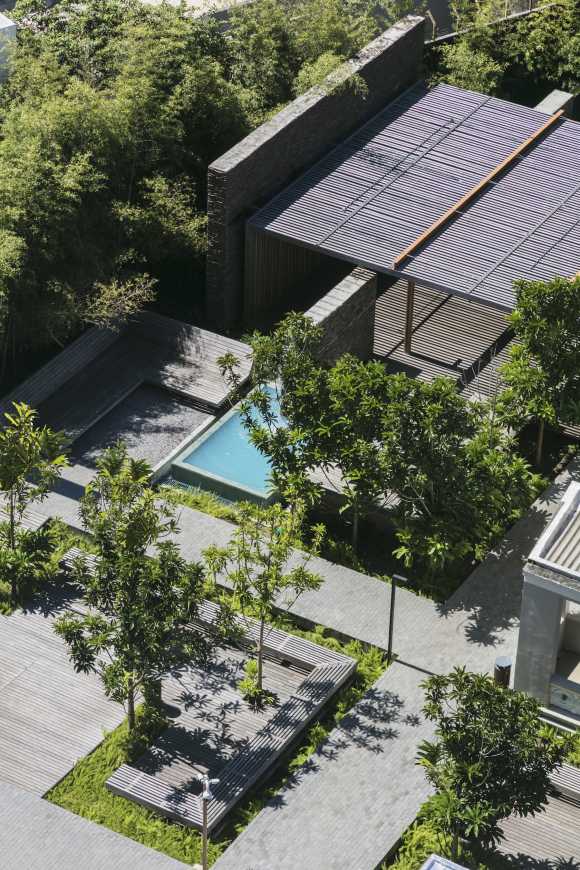
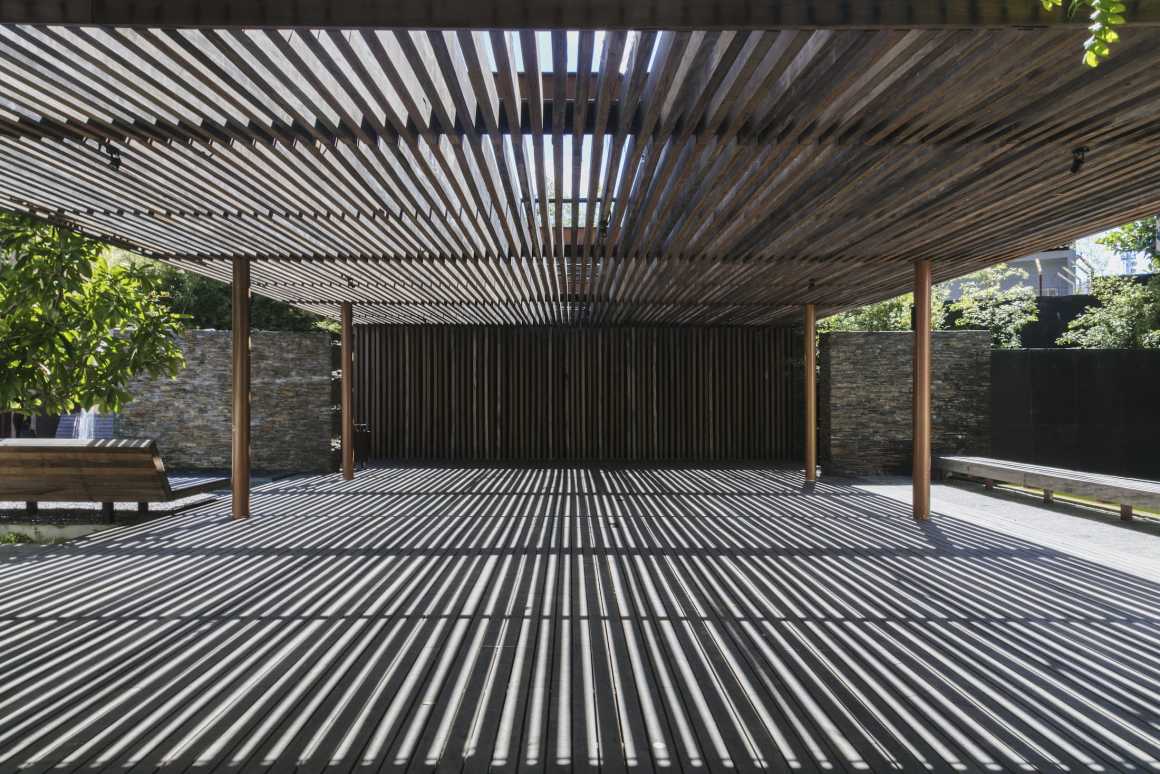
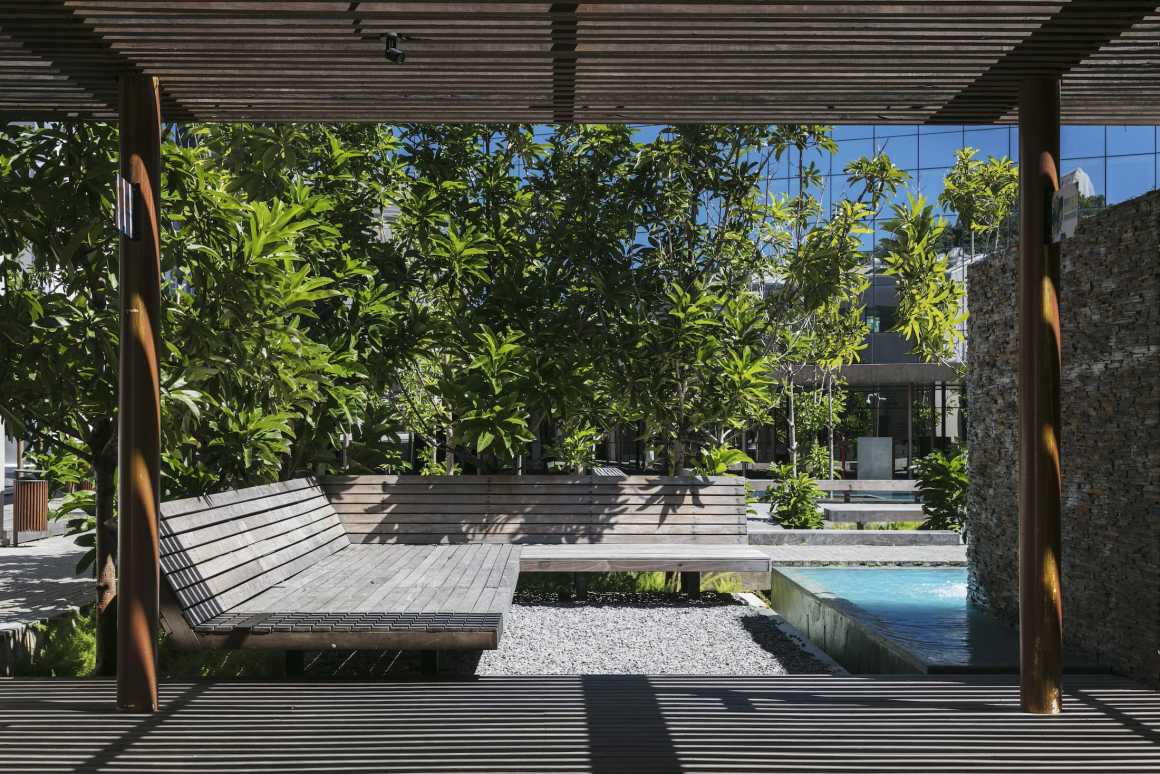
通过一个精确的、经过仔细推敲的几何形广场位于水和走道之间,景观家具根据人体工程学,设计舒适,因此学生可以在这里放松,一起开会和学习,度过美好时光。还有两个不同设计的水瀑布,其中一个位于两个休息厅之间,声音较大,因为它从大约2米的高度落下,意在显示力量和运动;另一个瀑布是由一个由铺满石头的斜倚墙组成,上面的水慢慢流出,带来一种放松和舒缓的声音。这条小路通向一个木制的藤架和主木平台,这里就是大学生进行不同活动的多功能空间。
Through a precise and thought out geometry, the squares are positioned in between the water and walkways and the furniture is ergonomically and comfortably designed so students can unwind, spend time together, or even have meetings and study. There are two water cascades with different designs, one between two lounges with a stronger sound, since it falls from a height of approximately 2m and is intended to show force and movement. The other water cascade consists of a reclined wall covered with stones on which water slowly runs off adding a relaxing and soothing sound. The pathway leads to a wooden pergola and the main deck, that serves as a multifunctional space to different activities in the university.
▼休憩坐凳 Bench


▼瀑布水景 Water fall
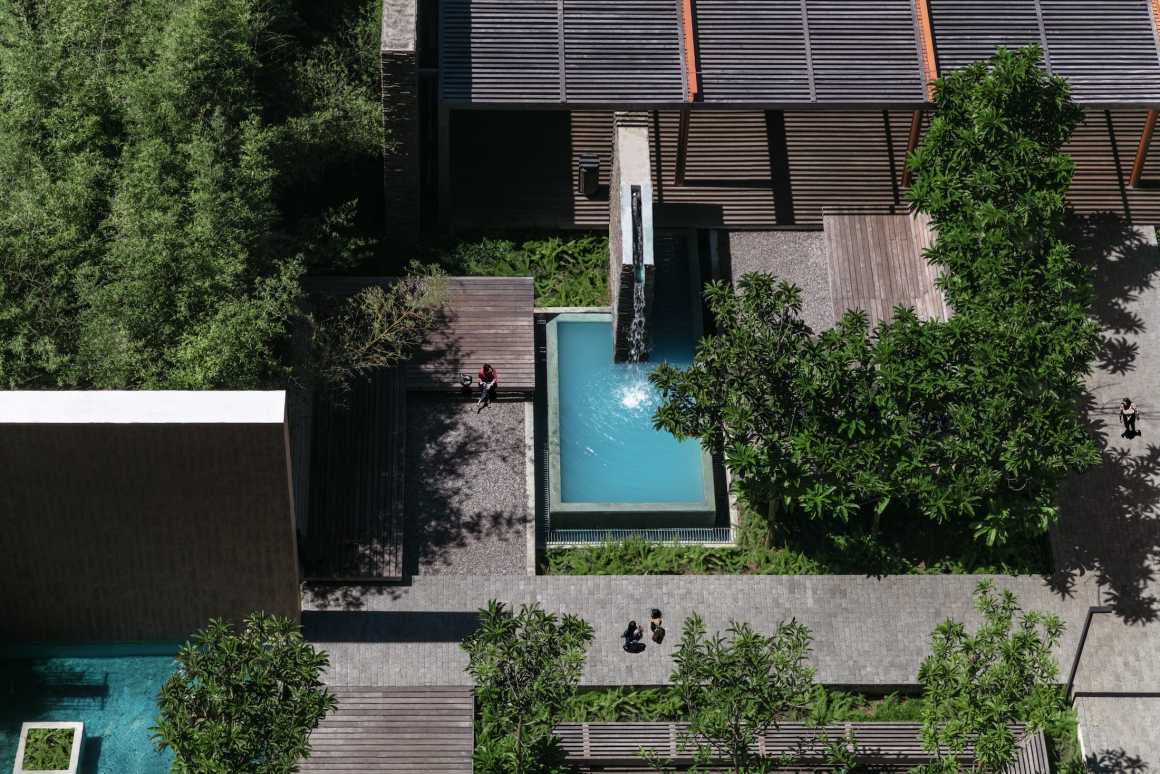
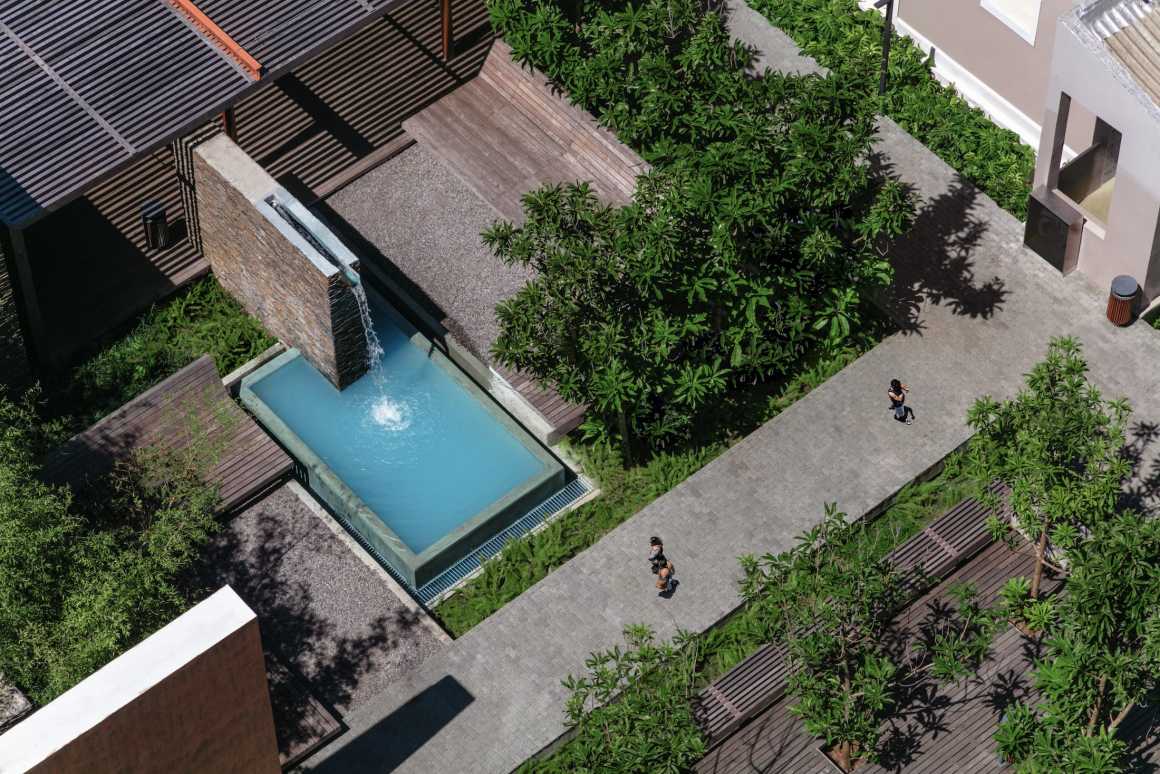
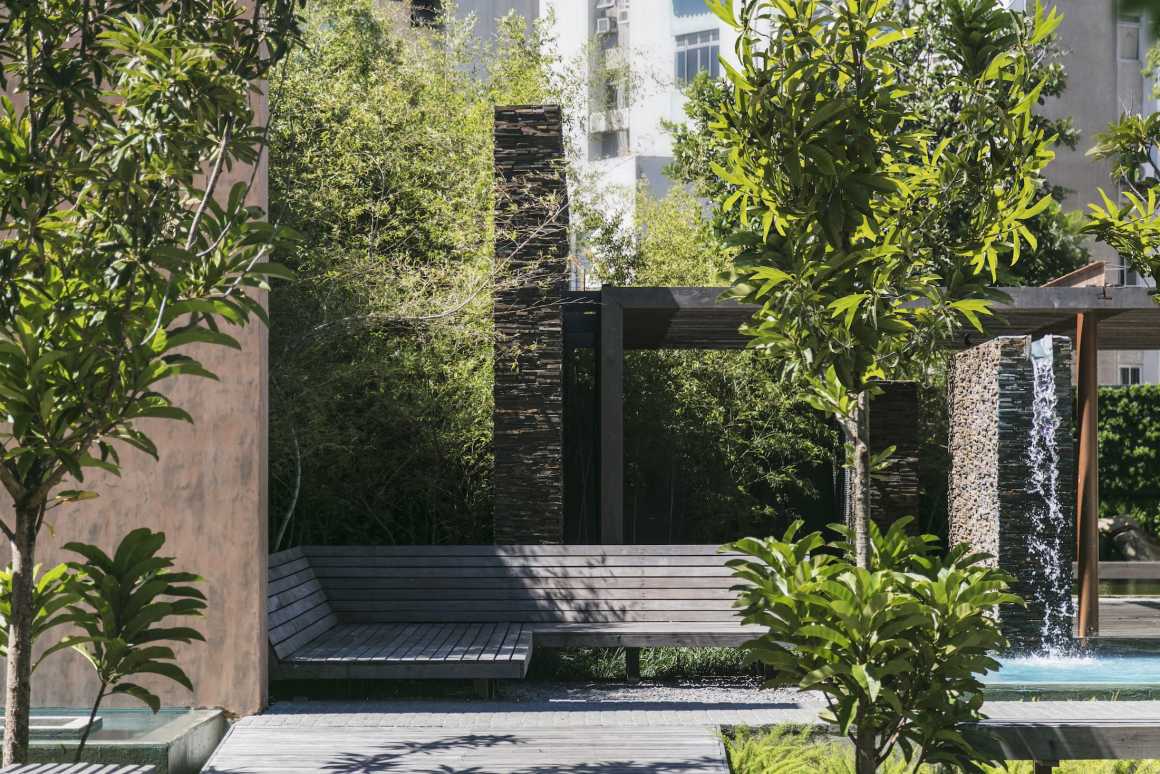

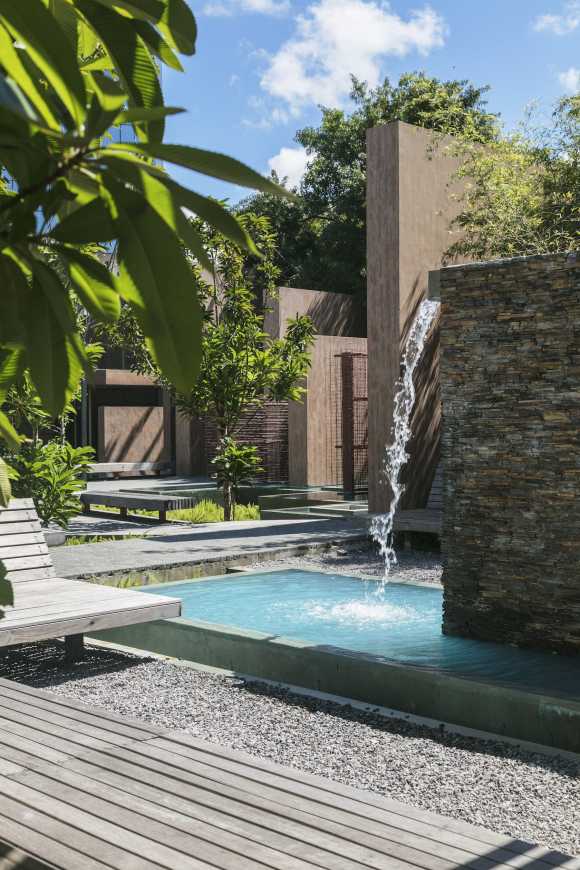
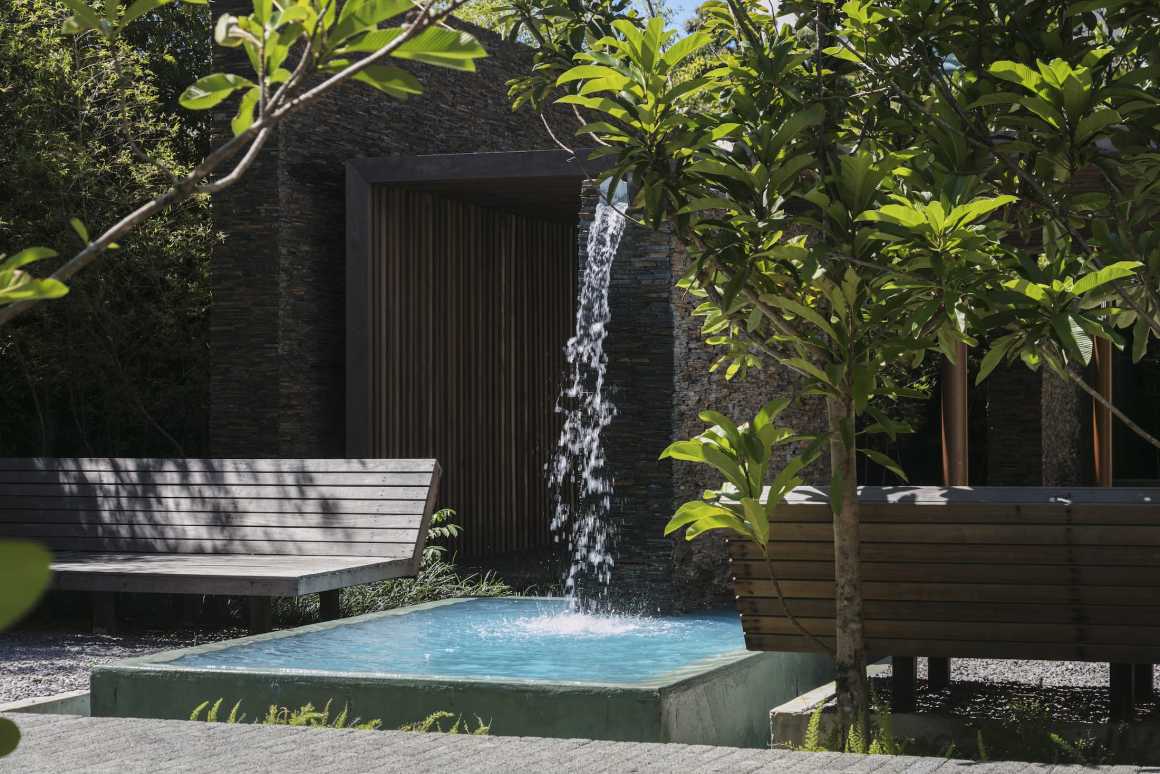
不同高度的墙壁为广场设置了其特殊背景,为项目增加了雕塑尺度和垂直感。它们要么用石头覆盖,由金属结构制成,要么使用一种当地广泛的施工技术模仿土坯材质。
There are walls with different heights that sets a background to the square and adds a sculptural scale and verticality to the project. They are either covered with stone, made of a metallic structure, or mimic adobe, a local technique widely used.
▼红色景墙 Feature wall
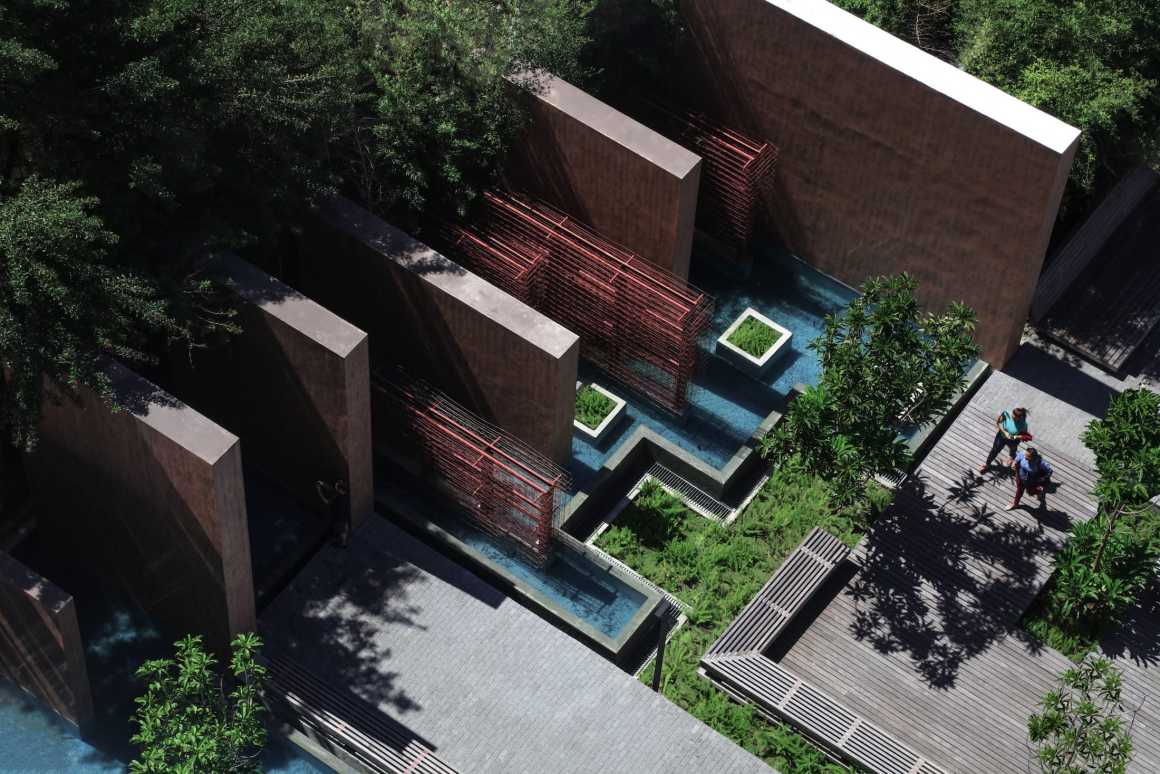

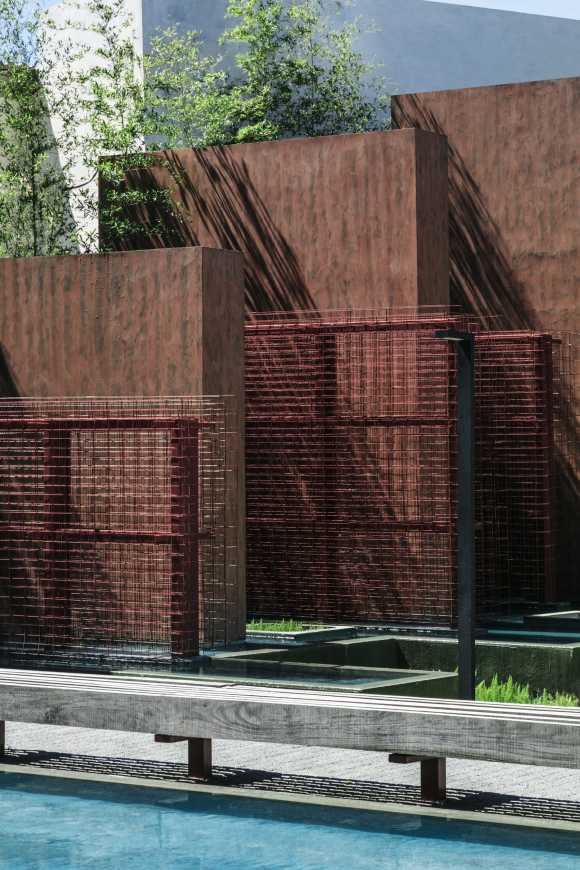
历史建筑和先前的人行道比自然地形高出70厘米,所以新建筑和人行道也被设计在同一水平面上。这些花园大多平齐于地面,以保护现有地形,并种有本地植物以适应当地气候,现有树木也得到了保护,并在项目中得以重视。灌溉用水主要来自雨水和建筑物的再利用水。人行道上铺设着透水材料,木质平台的材料是经过认证的含有自然土壤的渗透性材料。
The historical building and prior walkway are 70cm above the natural terrain, so the new building and walkways were also designed to be on the same level. The gardens are mostly on ground level to preserve the terrain and have native plants or adapted to the local climate. The existing trees were preserved and given its proper importance within the project. The water for irrigation comes mostly from rainwater and reused water from the building. The walkways are covered with permeable pavers and, with the certified wood deck, grants permeability to the natural soil.
▼水景 Waterscape



花园提高了学生和教师的生活质量,并带来了自然、社区意识、归属感和自豪感,给大学提供了一个多元化和受欢迎的户外空间,为人们之间的共存和联系创造了一个良好的环境。
The garden brought quality of life, nature, a sense of community, belonging and pride to students and faculty, giving the university a plural and welcoming outdoor space. It creates an environment for coexistence and connection between people.
景观设计:Hanazaki
建筑设计:Maria Eugenia Ferraz Arquitetura
项目年份:2017年
地点:巴西 累西腓
图片:Yuri Seródio
Landscape: Hanazaki
Architecture: Maria Eugênia Ferraz Arquitetura
Project year: 2017
Location: Recife,Brazil
Photos: Yuri Seródio
更多 Read more about:Hanazaki


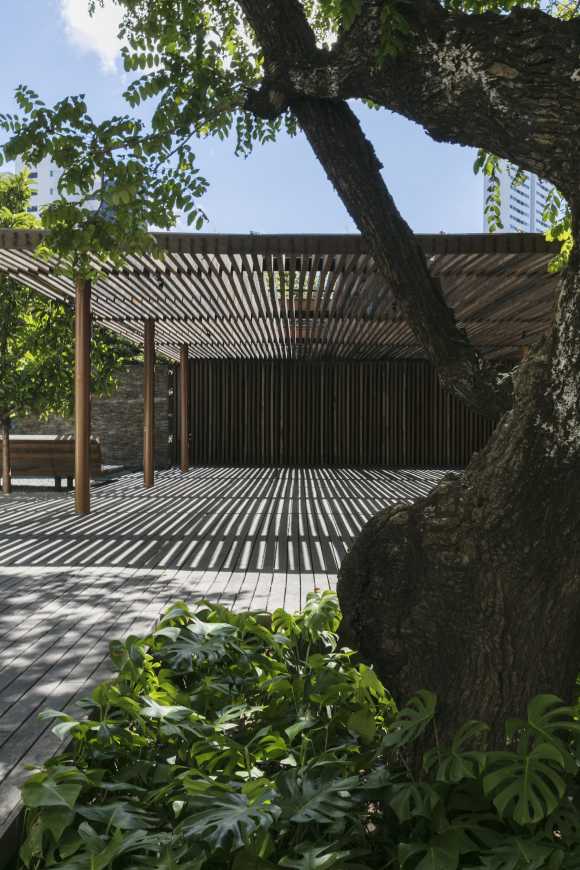
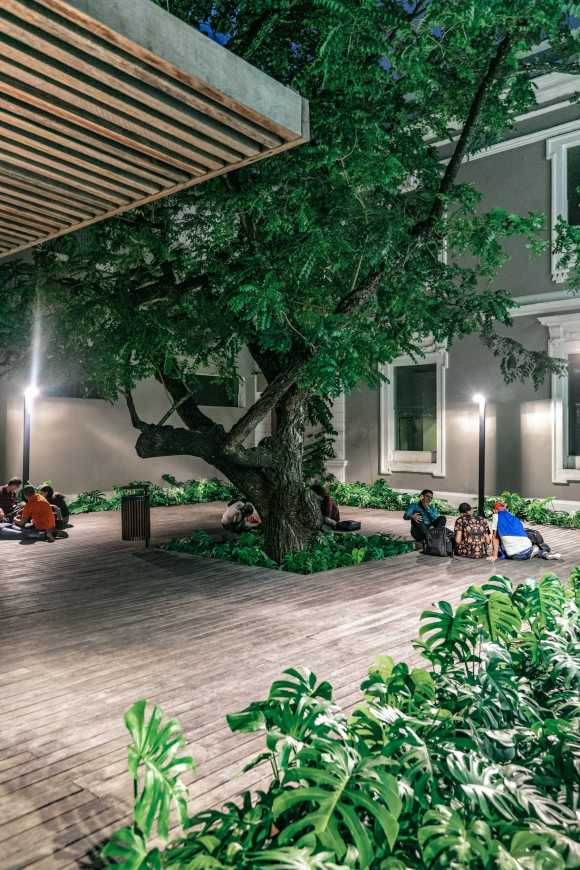

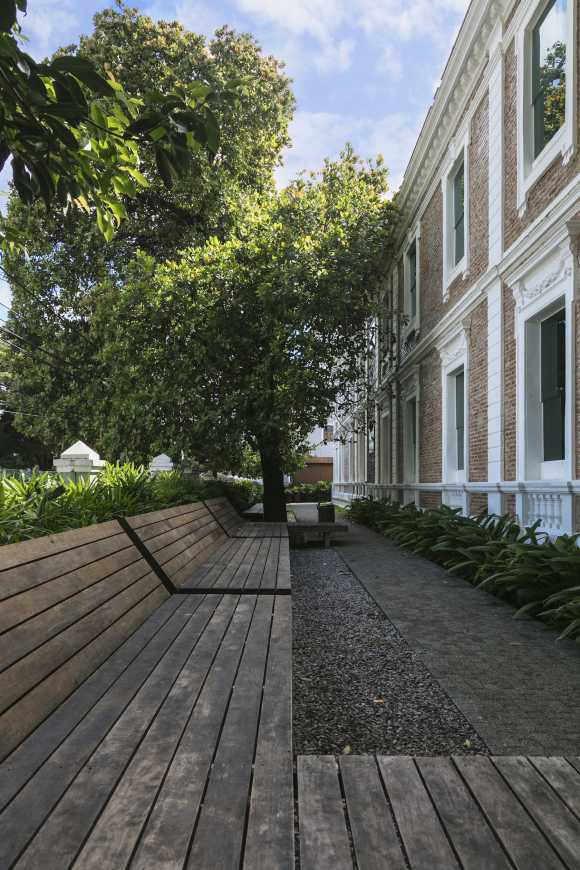

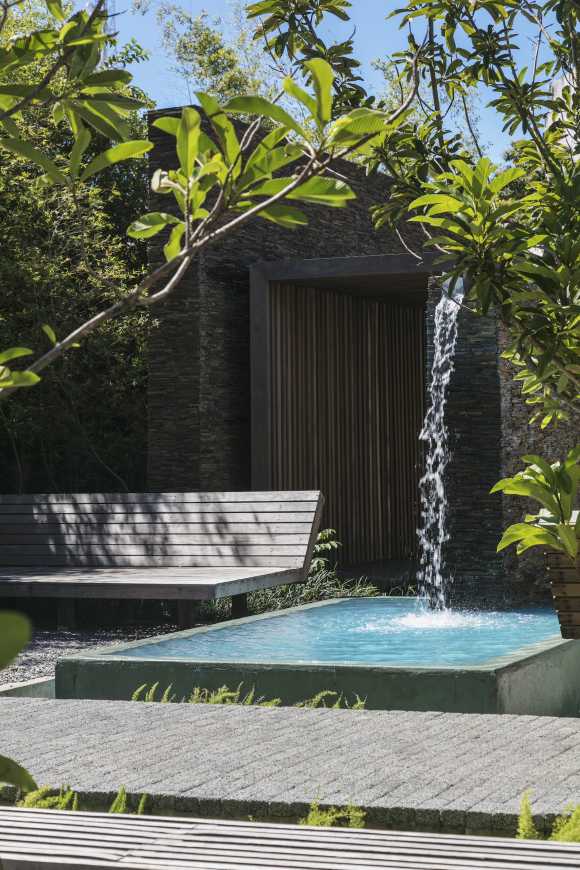


0 Comments